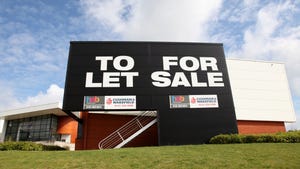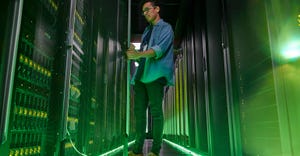November 4, 2022

I recently had the privilege of moderating a Leaders in Action (LIA) event on the theme of supply chain as a partner for growth, co-hosted by General Mills’ CSCO, Paul Gallagher, at their Minneapolis headquarters.
A group of COOs and CSCOs from large global companies joined this interactive event to hear General Mills’ story and to share perspectives with peers on how to partner with commercial teams, finance and of course customers to drive new growth in the business. The president of General Mills’ largest business unit and the CFO also joined the discussion to provide perspectives on how supply chain can be a business partner first and an operational team second.
I opened the session with a view from Gartner’s CFO community. As demand has slowed in many industries and inflationary pressures persist, financial leaders are caught between price-exhausted customers and higher input costs. This is the moment when the economic pendulum hits its peak and retraces its next cycle. Between mid- and late-2022, a diminished ability to pass on price increases has flipped the CFO script strongly in favor of cost cutting.
Avoiding the Cost and Cash Savings Penalty Box
This is a potential threat to supply chain’s hard-earned shift from backroom to boardroom over the last few years. Some COOs and CSCOs fear being thrown back into the cost and cash savings penalty box. General Mills’ CFO, Kofi Bruce, was clear that supply chain should stay on offense in support of the business, with the caveat that future investments will support structural changes to the business versus those proving transitory as we emerge from the pandemic era.

11022022
What Did We Learn?
Here are some key takeaways from the group sharing and discussion at this LIA event:
One member has seen an enormous unlock in aligning the organization (sales, supply chain, finance, etc.) and accountability to business units. It is driving a one-team mentality, where specific function and suborganization are secondary.
Gartner sees a broader, cross-industry trend of companies reorganizing themselves in line with major business units. This allows for faster and more tailored support, which is critical in today’s dynamic business environment.
For this shift to be effective, however, functional organizations such as supply chain need to have already gone through a process of centralization and standardization across people, process and technology, in line with a traditional organizational maturity model.
Sustainability driven by business units (BUs) is an example of where significant progress can be made since BUs own making investments and P&L tradeoffs over the long-term horizon. There may be some areas (e.g., total Scope 3 emissions reduction), where some corporate-level oversight is required to ensure scale.
Supply availability and reliable customer service are differentiators in the current environment, but once markets move closer to supply equilibrium, these revert to being table stakes.
The next competitive frontiers will be customer ease (i.e., frictionless experience) and customer enablement, which is providing solutions that make their business more successful and their operations more effective and efficient.

11022022-02
Running customer councils and “going to the gemba” (i.e., walking the floor and flow) at customer sites are fundamentals of delivering customer enablement.
Many companies and supply chains have shifted to fast-cycle decision making. The focus is on being roughly right and providing optionality in a responsive way, as opposed to being 100% precise after a long period of analysis and socialization with stakeholders.
An enabler of fast-cycle decision making is building a common data set and processes that prompt decisions, as opposed to relying on deep subject-matter experts to analyze situations and drive decisions through executive forums.
In workforce management, building radical flexibility has been a key to employee engagement and retention. Centralizing traditional roles such as manufacturing finance and planning decouples those positions from a site/geography and allows them to be remote roles.
Several leaders, including General Mills, highlighted diverse talent as enabling the business to survive – a key pillar of a resilient supply chain and broader business success. What differentiates the leaders is embedding DE&I in workforce planning processes, with ambitious goals and a formal performance management system.
It was inspiring to hear the level of conversation and passion for these topics across the supply chain community. We’re very much looking forward to the next gathering of this esteemed group, on Nov. 15, to explore the intersection of energy cost, security and sustainability.
Stan Aronow is a vice president distinguished advisor at Gartner, supporting the global Chief Supply Chain Officer community. Prior to this role, Aronow managed Gartner's global Supply Chain Top 25 leadership research portfolio for five years.
This article originally appeared on the Gartner Blog Network here.
About the Author
You May Also Like







